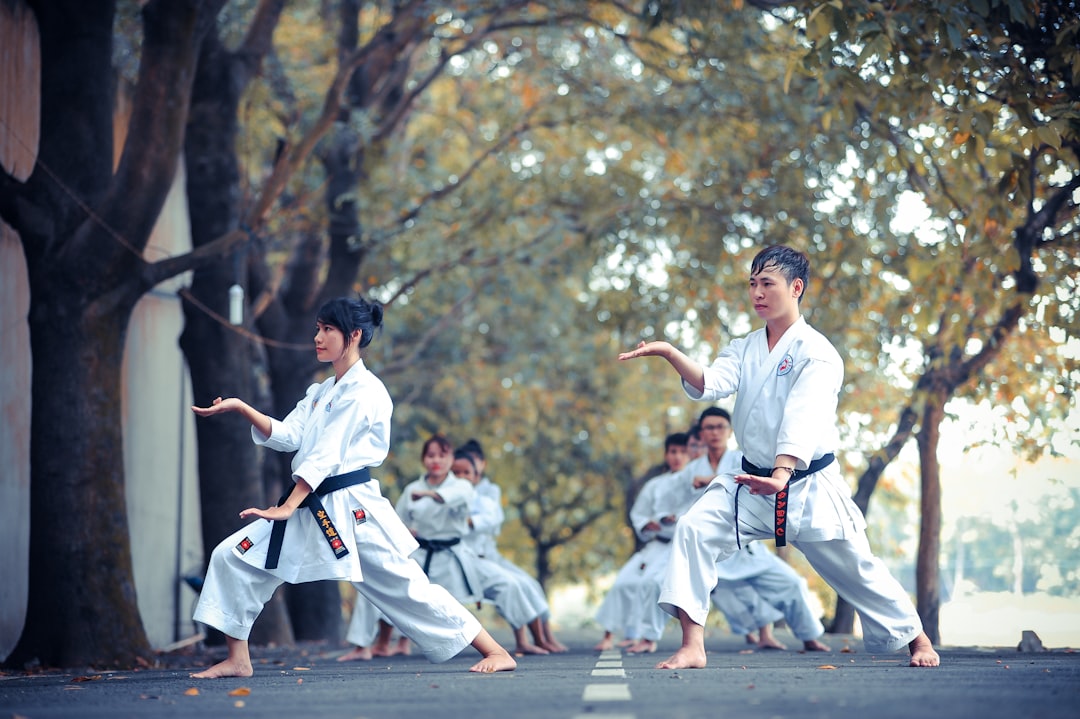The article highlights the importance of the karate uniform, known as a gi, for both ceremonial respect and practical functionality in the practice of karate. Made from cotton or hemp, the traditional gi is designed to allow unhindered movement while signifying the wearer's rank through color-coded belts—white for beginners, darker hues for intermediate ranks, and black for black belts. The quality of the gi's fabric ensures durability and comfort without restricting or causing discomfort during techniques. Protective gear is also essential in karate for safety, with training tools like focus mitts, kick shields, and heavy bags used to refine techniques and enhance strength conditioning by providing precise targets under various conditions. The gi, complemented by an obi belt that reflects the wearer's rank, is a symbol of respect for the martial art, and selecting the right fabric—be it light for warm climates or heavy for cooler ones—is crucial for comfort and performance. Overall, the karate uniform is not just a garment but a representation of the practitioner's skill level and their dedication to the art within the karate community.
Exploring the multifaceted world of karate reveals a carefully curated selection of equipment that not only enhances performance but also upholds the discipline’s traditions. This article delves into the essential gear every practitioner should possess, from the quintessential karate uniform, known as the gi, to advanced training tools designed for safety and skill advancement. We will dissect the components of a standard karate gi, explore the significance of belt colors, and examine specialized equipment that caters to both novices and seasoned karateka. Join us as we navigate through the necessary footwear, protective gear, and accessories that contribute to a comprehensive karate training experience. Whether you’re a beginner or an experienced martial artist looking to elevate your practice, this guide will provide valuable insights into the tools that support your journey in karate.
Essential Karate Gear: Breaking Down the Traditional Gi and Other Key Equipments

When practicing karate, the traditional uniform known as a gi is an essential piece of equipment. The gi, a two-piece garment consisting of a jacket and trousers, is not only a symbol of respect for the discipline but also serves a practical purpose. Made of cotton or hemp, it allows for ease of movement while training and performing karate techniques. Does the fabric of the gi make a difference in practice? Absolutely; the material should be durable yet comfortable, enabling practitioners to execute movements with fluidity without causing abrasion or discomfort. The color of the gi typically varies by rank, often white for lower belts and black for higher ranks like black belt, thus signifying the wearer’s level of skill and experience in karate.
Beyond the gi, other key equipment includes protective gear for safe sparring. Padding is crucial to protect hands, wrists, forearms, chest, and groin. Shin guards and mouthpieces are also common to prevent injury during practice or competition. Are these protective measures mandatory in all karate styles? While requirements may differ by style and organization, they are widely accepted as best practices for safety. Additionally, training tools like focus mitts, kick shields, and heavy bags are used to refine techniques and build strength and conditioning. How do these tools enhance the training process? They provide a target for strikes, allowing practitioners to practice with precision and control under various conditions.

When engaging in karate, selecting the appropriate uniform, known as a gi, is essential for both functionality and respect for the practice. A traditional karate gi typically consists of a jacket, trousers, and a belt, each serving a specific purpose during training. The jacket, which is often made of cotton or hemp, allows for ease of movement while providing enough structure to maintain form during various techniques. The trousers, also made from the same materials, offer durability and comfort, enabling practitioners to execute kicks with confidence. Additionally, the belt, known as an obi, not only holds the gi closed but also signifies the wearer’s rank within the martial arts hierarchy. When choosing a karate uniform, it’s important to consider the weight and weave of the fabric; lighter fabrics are more suitable for summer training, while heavier ones offer additional warmth during colder months. What type of material is most suitable for intense training? A high-quality cotton or hemp blend offers both breathability and durability. How does the belt in a karate gi signify rank? The obi, adorned with stripes or patches representing different belts, visually conveys the practitioner’s level of skill and dedication to their discipline within the karate community.
In wrapping up our exploration of the essential equipment used in karate, it’s clear that the traditional gi remains a cornerstone of the martial art, representing both the discipline and the unity of its practitioners. Beyond the gi, karate enthusiasts utilize a variety of tools to enhance their training and performance, from focus mitts for precision strikes to protective gear for full-contact sparring. Each piece of equipment serves a purpose in the development of skill, strength, and technique. For those interested in delving deeper into the art of karate, understanding the role of each item is key to maximizing training efficacy and safety. Whether beginning the journey or advancing in practice, the right gear not only supports physical performance but also embodies the rich tradition and dedication that are at the heart of this timeless martial art. Remember, the best karate uniform name complements the practitioner’s needs and honors the discipline’s heritage.
